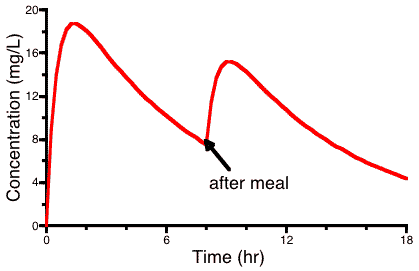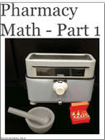
Figure 16.4.1 Enteroheptic Recycling
return to the Course index
previous | next

Figure 16.4.1 Enteroheptic Recycling

Figure 16.4.2 Cp versus Time showing a Second Peak
Figure 16.4.2 illustrate plasma concentration versus time curve which may result from extensive enterohepatic recycling. Note, the presence of the second peak shortly after the dumping of bile into the small intestine in response to the presence of food.
Other compounds extensively excreted in bile include cromoglycate (unchanged drug), morphine, and chloramphenicol (as glucuronide). At least part of the biliary secretion is active since bile/plasma concentrations maybe as high as 50/1. There can also be competition between compounds.
The efficiency of this biliary excretion system can be assessed by use of a test substance, such as Bromsulphalein.
Material on this website should be used for Educational or Self-Study Purposes Only
Copyright © 2001 - 2025 David W. A. Bourne (david@boomer.org)
 | Pharmacy Math Part One A selection of Pharmacy Math Problems |
 |